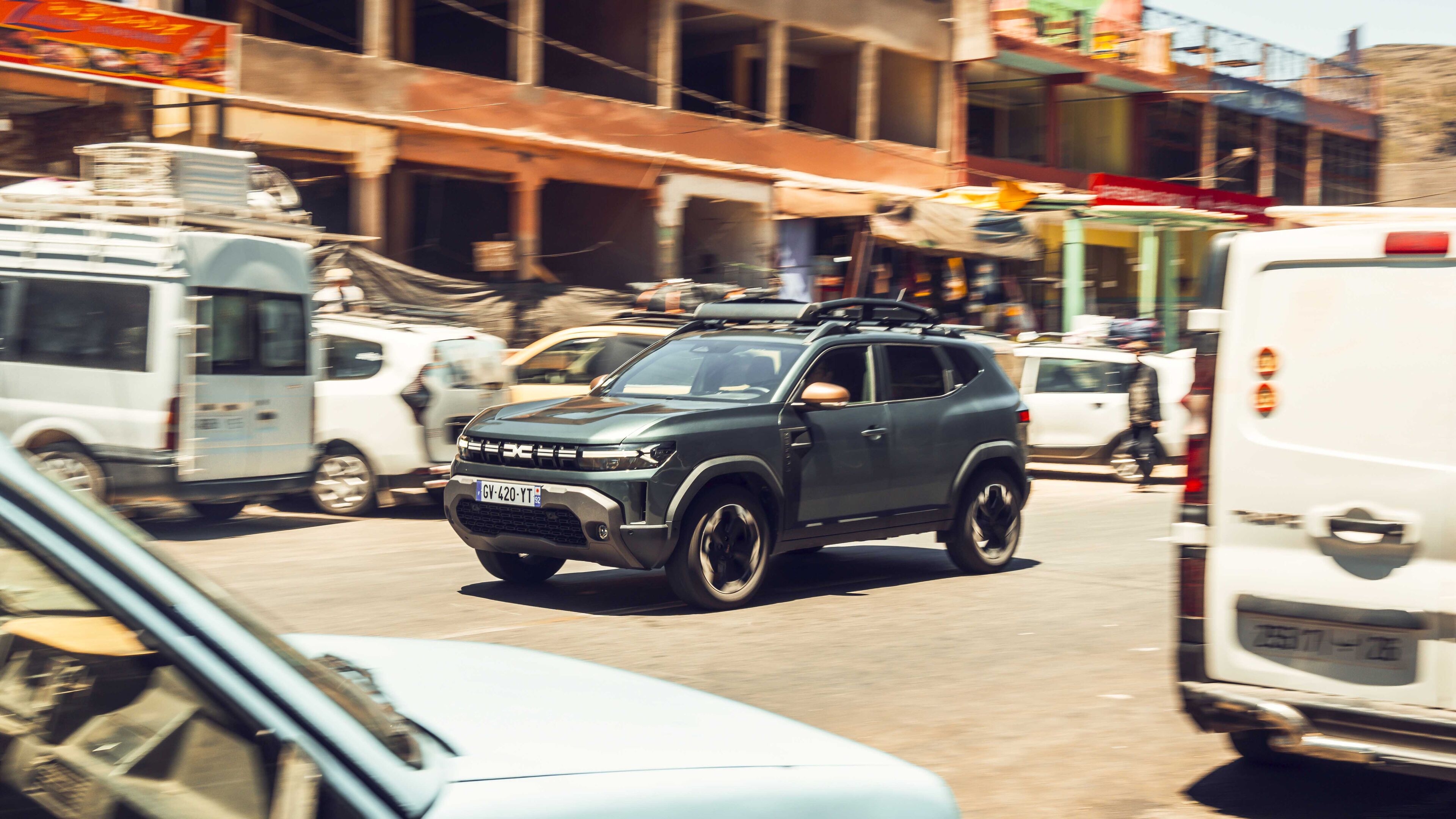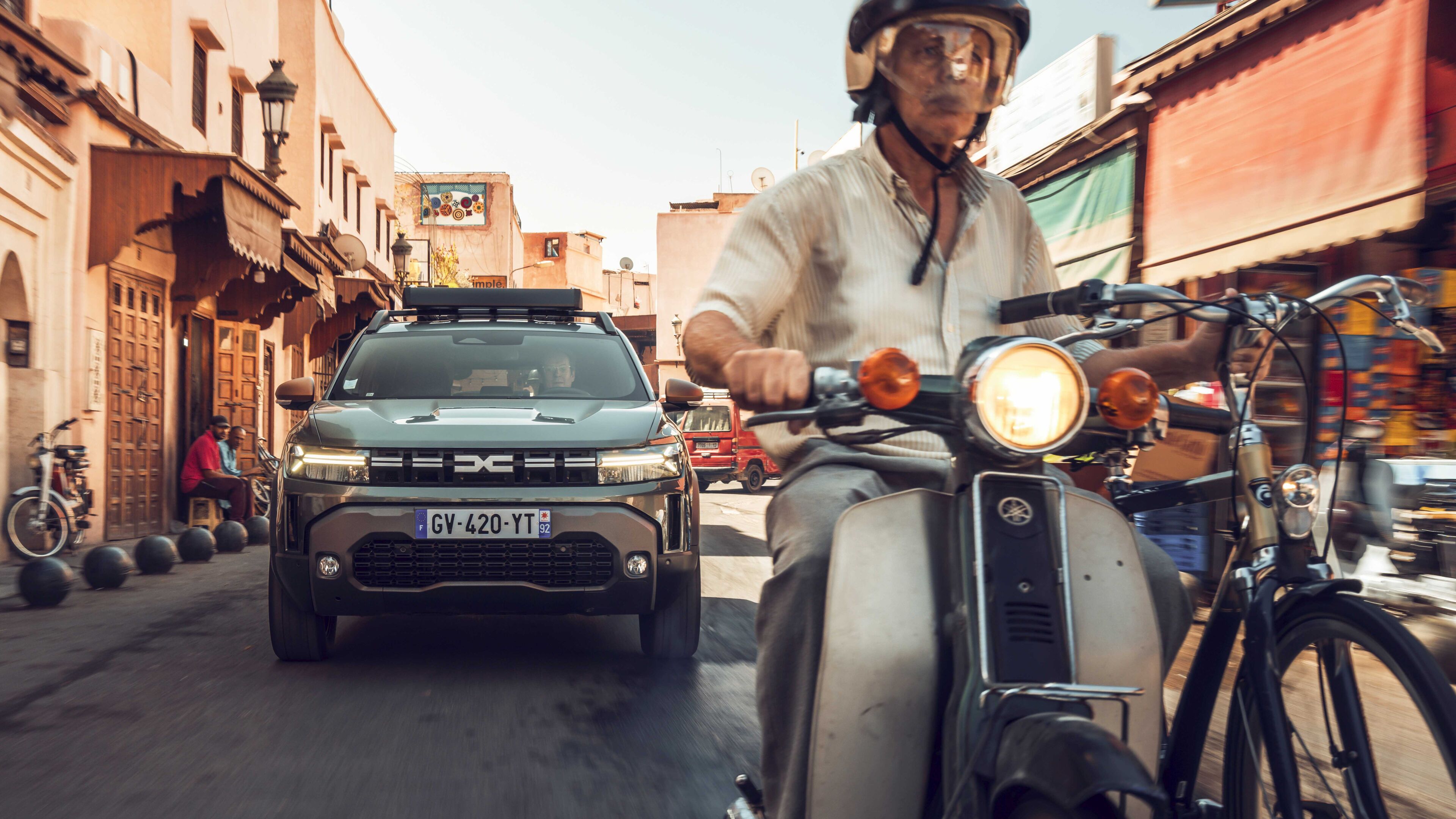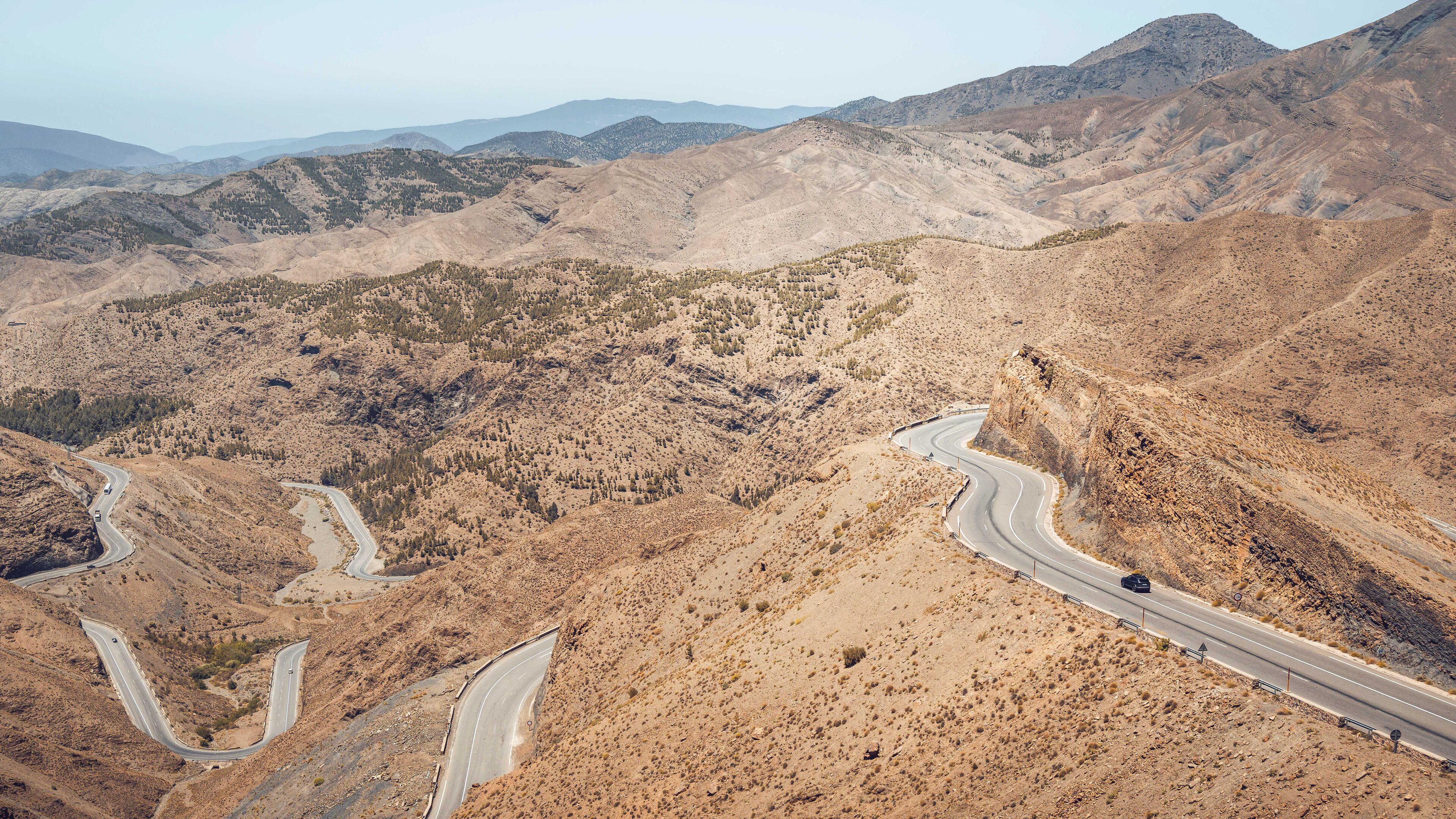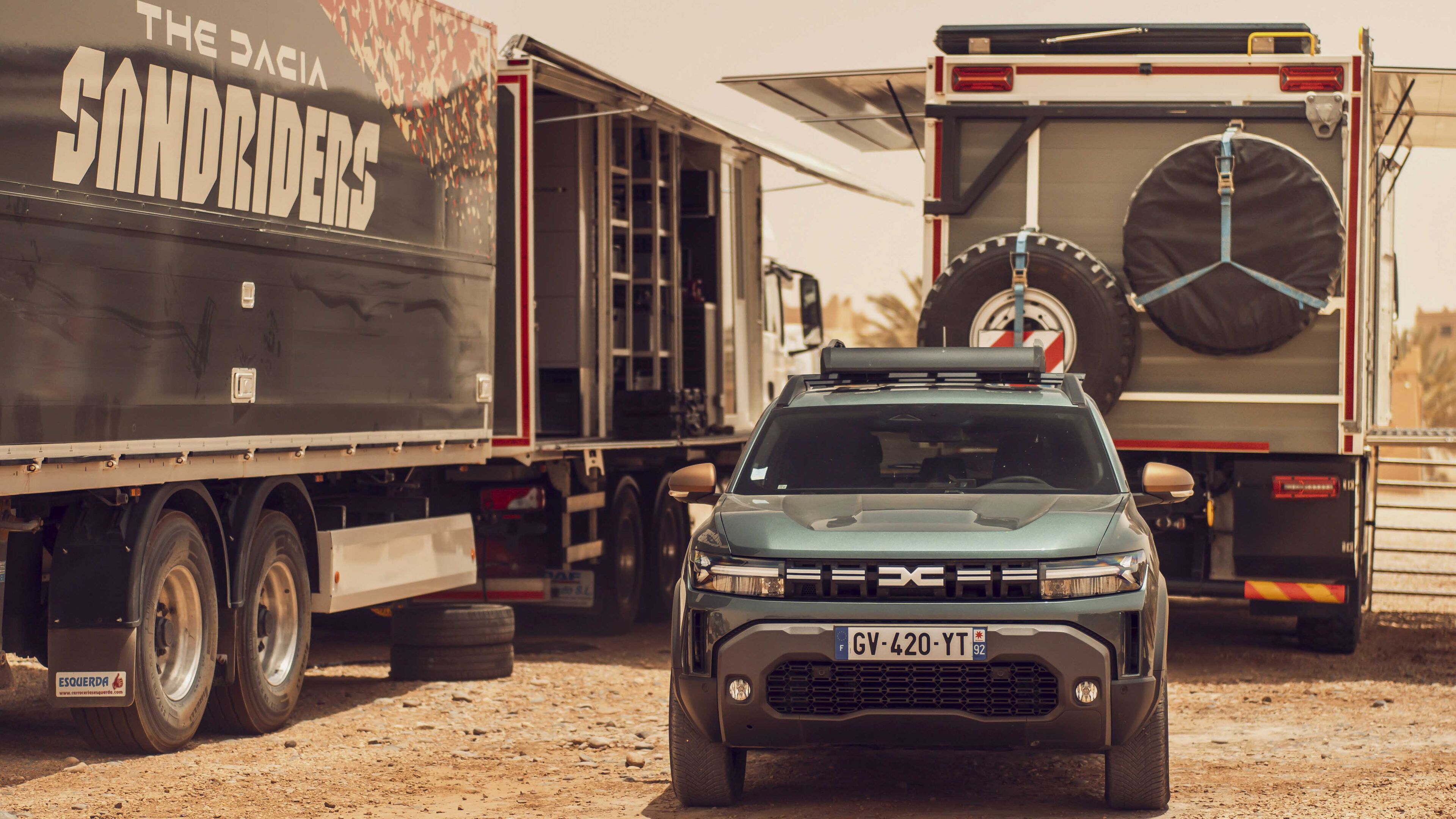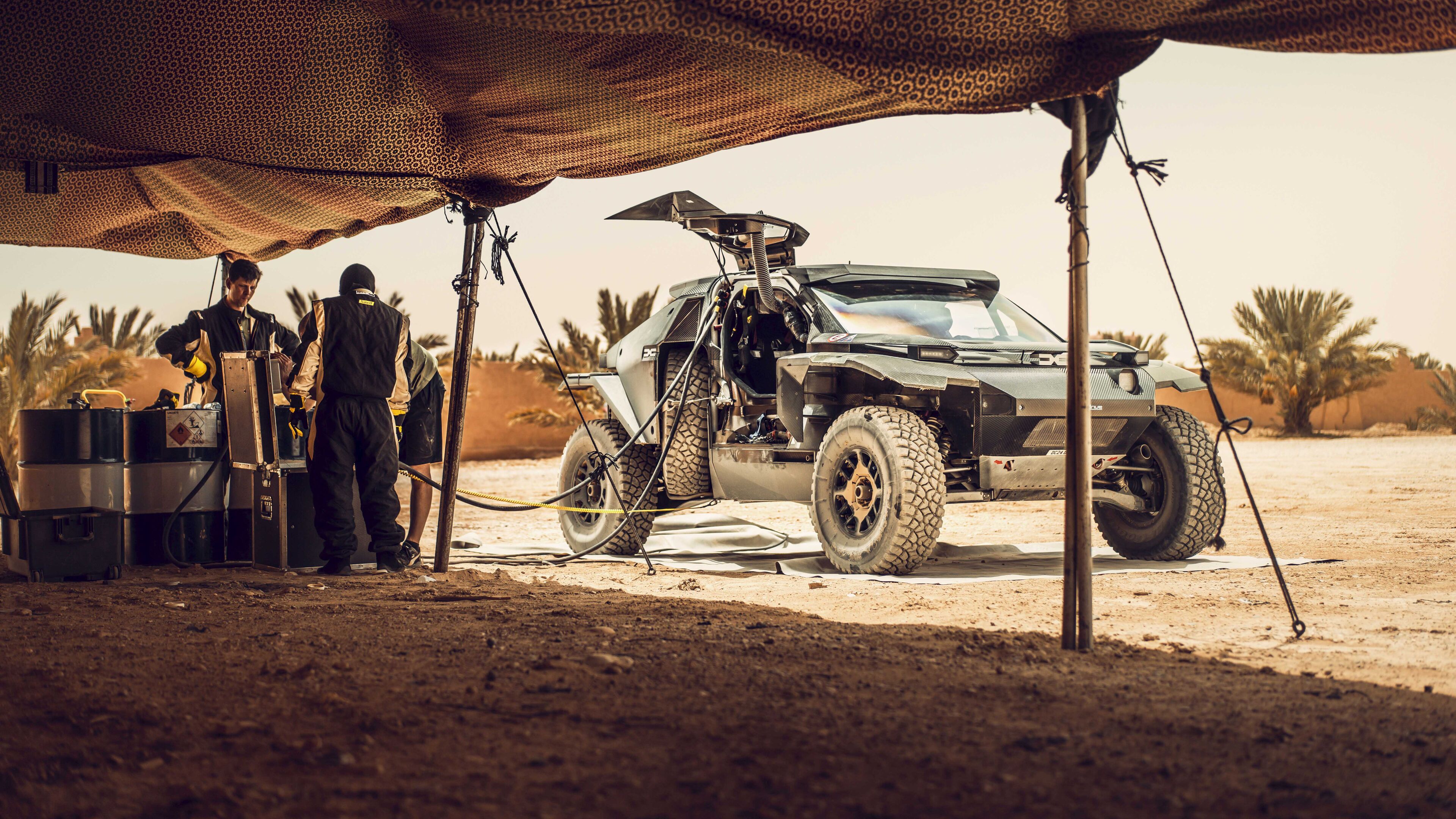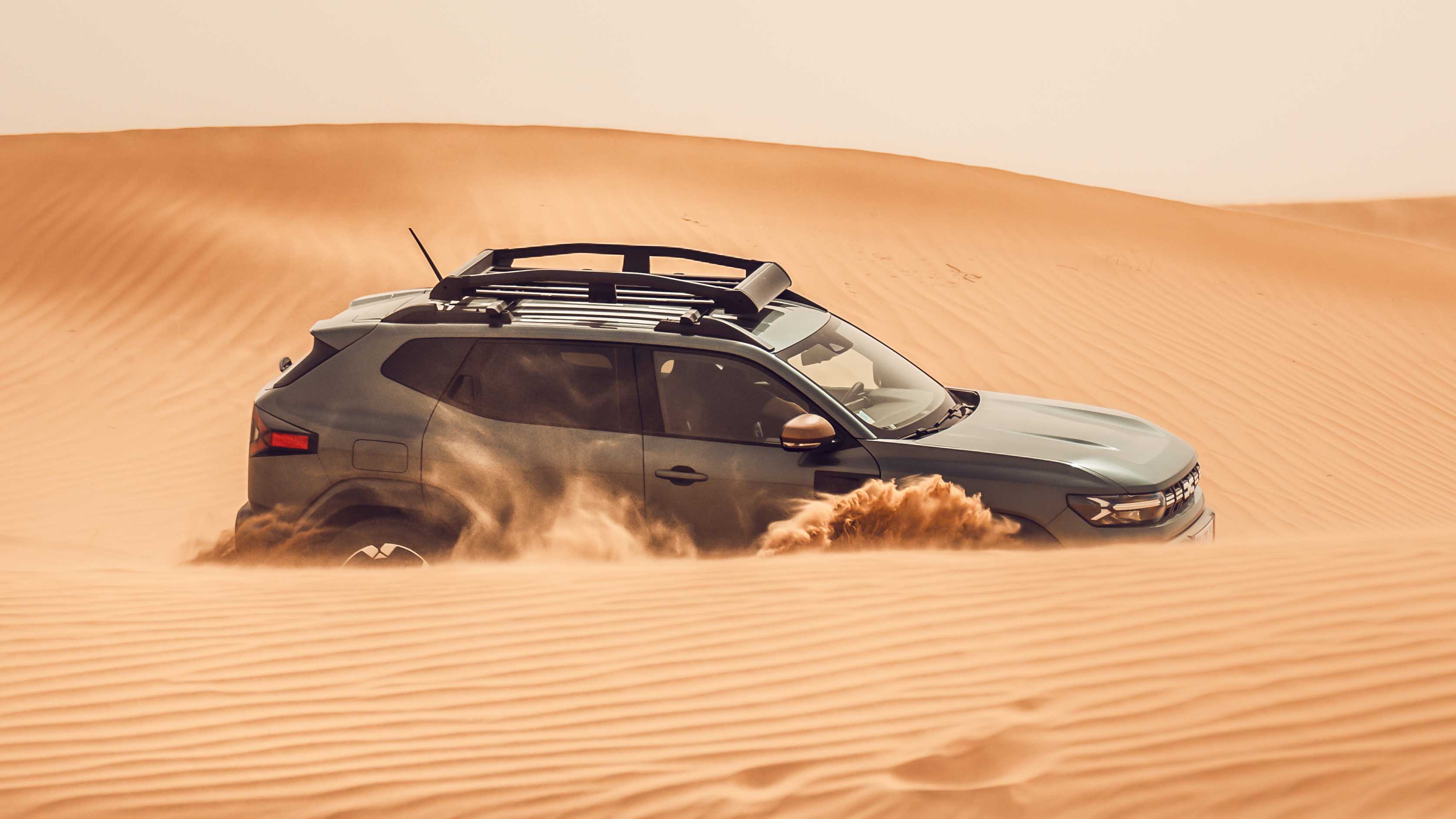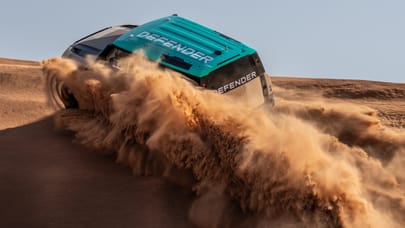
Hot pursuit: can the Dacia Duster locate a Dakar team in Morocco?
Dacia are renowned for cheapness, but not toughness. Can the Duster contend with the Moroccan climate in search of Dacia's Dakar team?
A map and a compass. An edict has been issued from Top Gear high command, and we are required to find our way from Morocco’s capital Marrakesh to Xaluca Arfoud in the southeast near the Algerian border using only these old school navigational tools. No smartphones, no GPS, and no police convoys. As if.
This desert digital detox will occur in the new Dacia Duster, a car whose huge success – 2.4m sold and counting since 2010 – is predicated on a similarly streamlined approach to life. It has what you need and not a whole lot else. Except that this new version dares to tamper with the formula and has aspirations. Say it isn’t so.
The map and some basic arithmetic suggests that we’re looking at a distance of 510km (317 miles), which doesn’t sound too arduous until you factor in a selection of spicy variables.
Photography: Mark Fagelson
Prime among them is the Atlas mountain range, a geological marvel that separates the Sahara desert from the Mediterranean Sea and the Atlantic Ocean across a swathe of North Africa. It’s majestic and beautiful but... kind of in the way. Our three-pot Duster is going to have to work every one of its 128bhp hard to make a dent in them.
It’s also hot. The sort of hot that makes the UK’s sporadic heatwaves look like an ice bath. We get antsy if it hits 30°C, but in Morocco that’s merely balmy. Where we’re going it’s forecast to reach beyond that. Far beyond, as it turns out. We’ll be frying eggs on the ground where we’re headed.
So who’s in Xaluca Arfoud? Only Dacia’s Sandrider racing team, running its first full test following shakedowns in Dorset and Château de Lastours in France. Having debugged the systems and made sure everything’s working, now they’re going for broke via a punishing immersion in the Moroccan desert.
This is where they push everything to the limit, including their drivers. And Dacia’s lineup is stellar: Nasser Al-Attiyah is a five times winner of the Dakar, nine times WRC champion Sébastian Loeb needs no introduction, and Cristina Gutiérrez is his former teammate and protégé from Extreme E. (She’s also a qualified dentist, and won the T3 category in this year’s Dakar.)
We love Rally Raid and Dakar in particular at TG. Having been to it myself I can tell you that only the Le Mans 24 hour race rivals it for sheer physical and mental endurance. Now imagine Le Mans lasting 14 days. Like the French classic, the Dakar attracts a special breed of competitor, and the sight of 400-odd race vehicles charging mostly into the unknown while an Arabian sun beats the hell out of you is the closest thing you’ll find to a real life Mad Max: Fury Road.
(The Russian Kamaz trucks are particularly impressive, but as the team has backed Putin and refuses to race under a neutral flag, it’s now persona non grata.)
As are we, for a nail-biting 12 hours. Morocco is a wonderful country, vibrant, culturally diverse yet easy to get to from the UK. Getting to and getting in are different things, however. TG’s intrepid trio includes videographer James, but although we’ve applied for the necessary permissions they’re still being processed. A camera is duly confiscated. Come back tomorrow, the man at the desk says, moustache twitching.
Remonstrating with Moroccan officialdom is not the way forward, we quickly learn. Fortunately, we have assistance in the form of local fixer Mark, an expat who has brought his father- in-law Mustapha along. Having been to Morocco a few times before, I insisted that local knowledge and an Arabic speaker were essential. Mustapha, it turns out, is a former chief of police in Marrakesh. We got our police convoy after all, though they won’t be using GPS either.
Top Gear
Newsletter
Thank you for subscribing to our newsletter. Look out for your regular round-up of news, reviews and offers in your inbox.
Get all the latest news, reviews and exclusives, direct to your inbox.
Morocco immediately feels different. A bit frisky. While we wait to hit the road, I spot an E30 BMW 3 Series convertible in the airport car park. Turns out it’s abandoned, and clearly hasn’t moved for some time. There are more, including a UK-registered early Noughties Range Rover, a same era BMW 7 Series (also on British plates), a Mercedes ML, and another dozen forgotten cars. Write your own script: who needs to leave a country like this in that sort of hurry?
We head into Marrakesh. Not far off a million people live here, and we pass mopeds that seemingly have about half the population perched on top of them. There are smooth new roads on the outskirts of the city but clearly no Highway Code.
Things get trickier still as we get as close to the medina (old town) as we can manage. It’s enclosed by 19km of dusty pink walls, dates back to the 12th century and teems with life. About a fifth of the city’s population lives in the riads within, the square at Jemaa el-Fnaa providing the focal point, snake charmers and all.
It’s already pushing 40°C, so I take advantage of the Duster’s climate control while watching the world go by. Market traders toss watermelons to each other, old folk meander about oblivious to the heat, and the mopeds keep on coming, like bees pouring out of a hive. The endless alleyways and rooftops remind me of Bond or Bourne movies. I have the same initials but that’s where the similarity ends.
It takes about 45 minutes to finally break free of the city, our route sweeping us over the High Atlas towards Ouarzazate. Time to take stock of the Duster. I’m especially curious because I own one of the outgoing models. It’s a masterpiece of ‘does what it says on the tin’ anti-design and a fantastic family hackabout. The new one has definitely seen the inside of a design studio, because it’s got some nice radii on the front wings.
Like most new cars it’s also bigger but not by much, thank goodness. There’s an arrowhead motif on the nose and lights and above the wheelarches. More rounded it may be, but it’s still admirably chunky. There’s also scope to accessorise, for possibly authentic lifestyle purposes. And there’s some sustainability: Dacia says 20 per cent of the plastics on the new Duster are recycled.
This used to be the case for its underpinnings, too. One surefire way to keep costs down is to redeploy old platforms, and the previous gen Dusters used old Nissan and Renault Clio bits. The new car is part of a bigger product picture, and because it uses the latest CMF-B group platform it’s competitive when it comes to interior space, crash protection, and noise insulation. It also has, gulp, the advanced driver assistance guff that Dacia pointedly ignored before, to the detriment of its Euro NCAP rating.
But the law demands it now, so say hello to speed limit recognition, auto emergency braking and lane departure assist. Fortunately, it’s easy to turn things off in the new Duster. Once done, you can save your settings in a Perso button beside the steering wheel (like BMW’s M buttons, only less exhilarating).
Venture beyond the base Essential trim and you gain 17in wheels, Apple or Android wireless connectivity, and a 10.1in infotainment screen. Heresy. In the entry level cars you just plug your phone in and that becomes the main display. Funnily enough, the new Bugatti Tourbillon adopts a similar approach.
The Duster cabin has nice shapes, plenty of storage space, decent ergonomics, and clear graphics. Excellent seats, too, and ample space. There are some gripes – the aircon is adjusted by a piano key row of switches, which is fussier than the rotary knobs on the outgoing car. And the audio volume control is hidden on the screen, somewhere we couldn’t find. Me, I like the idea of just plugging my phone in.
You’ll know Ouarzazate if you’ve watched Gladiator, Kingdom of Heaven, or Game of Thrones. There’s a major film studio here, and the area around the city often doubles for sketchy parts of the Middle East. The mountains have given way to epic desert plains. It’s also home to the Noor power station, a £7bn solar complex whose third part consists of a 250m-tall tower that has a molten salt storage system and is surrounded by heliostats reflecting sunlight. It’s a phenomenal thing to behold.
As is the main road we follow for most of the day, which carves its way up and through the mountains and back down the other side with impeccably engineered integrity. The last time I was here we passed a rally that consisted almost entirely of Renault 4s, hundreds of them loping along, adopting almost impossible roll angles. The road was still unfinished in places, queasy hairpins suddenly punctuated by roadworks that weren’t even vaguely on nodding terms with health and safety.
The Duster is almost – almost – a latterday R4, and though clearly nobody’s idea of a sports car it handles just fine. There’s little steering feel but it corners with linearity and composure. The 1.2-litre, three-cylinder engine makes its 128bhp go a surprisingly long way, though the six-speed manual it’s hooked up to is a bit vacant. Bar some wind noise, it’s refined at motorway speeds. The seats are great too, and though we’ve filled every storage space with water bottles and all the other usual travel tat, there are plenty of them.
We don’t get lost, but we do make a substantial detour to take in the spectacular Dadès Gorge. The road through it was constructed in the early 1930s by the French military, who had the local Berbers rolling boulders onto them from above.
It’s a long haul, and I keep myself (but no one else) entertained by spotting a variety of mostly French old cars that have long since vanished from British roads. Who amongst us mourns the passing of the Renault 9 and 18, or the Peugeot 309 and 505? Me, that’s who. And Morocco provides. We also see a Citroën GS and Simca 1500, heat-stricken but otherwise intact.
Sadly, though, the Mercedes W123 saloons that were once a staple of these parts have finally met their maker. They were known as the ‘merci dix’, a play on Mercedes but also ‘thanks times 10’ for their role in mobilising a country with patchy public transport. A 2014 transport ministry incentive scheme offered taxi drivers 80,000 dirhams (£6,500) to scrap their old timers. Dacia, which has factories in Tangier and Casablanca, has been the main beneficiary. The Duster is made in Romania but the Lodgy and Sandero are local. Dacia has close to 30 per cent market share in Morocco, and the evidence is all around.
After a night in Tinghir we press on to Erfoud. It gets dustier and hotter, the landscape increasingly alien. Some of the smaller towns are eerily quiet, like abandoned movie sets. Then we see kids kicking footballs, locals grabbing shade in concrete doorways, and a smattering of little markets. There’s the odd dwelling in the absolute middle of nowhere, life lived right on the edge of what’s possible.
The road becomes narrower and disappears completely for one memorable stretch, but it’s mostly better surfaced than most of the UK’s. When we finally find the Sandrider base camp (with a little judicious satnav cheating), the temperature has risen to 47°C. A Saharan wind has whipped up so suddenly only two things matter: aircon and water.
The Dacia team has been here for a few weeks, and the support trucks are corralled in a courtyard like wagons in a Western. There’s little in the way of distraction, and progress has been good. The Sandrider is a fabulous looking thing, close to 2022’s Manifesto concept but drawing on the learnings Dacia’s partner Prodrive made whilst fielding its BRX Hunter in desert battle.
“We’ve chosen Prodrive as the technical provider and we obviously value their huge experience,” team principal Tiphanie Isnard explains. “But we’ve taken a white page and designed everything ourselves. We start with the driver and co-driver and ask them, ‘what do you want in the car?’ because the human part is the priority.
"You must start with the cockpit. Visibility is crucial when you’re driving in the dunes, so the car has a big windscreen and side windows. Even the position of the speedo... Sébastien likes his in a specific place. We also need somewhere to put his coffee cup. It’s essential for his mindset.”
The aim is to promote low carbon mobility but without the huge cost and complexity
She’s not joking. I ask if he’s requested an ashtray but apparently he’s cut down on the cigarettes.
Loeb had apparently become frustrated with some of the design quirks in the Hunter. The suspension was fragile leading to excessive punctures, the configuration of the exhaust causing the rear tyres to heat up. Everything on the Sandrider is new or substantially upgraded. The front and rear axles have been beefed up. The brakes are new, and the six-speed sequential gearbox has a new casing. An onboard gear-driven generator replaces the traditional starter motor.
The door panels are magnetised so bolts won’t go missing during a tyre change. The spare wheel is held in place by a simple strap and there’s no fairing in front of it. The engine is the proven 360bhp Renault-Nissan 3.0-litre twin-turbo V6. Technical partner Aramco is working with Dacia on a synthetic fuel. The aim is to promote low carbon mobility but without the huge cost and complexity of Audi’s RS e-tron Dakar machine.
“We’re not just focused on the car’s pure performance, we’re also focused on the human performance,” Tiphanie continues. “It’s a massive race, we change the bivouac every day, we’re sleeping in tents on the roofs of motorhomes. There is no star system here, everyone is living to the same rules. The drivers are in a motorhome but it’s not one of those big American ones. That’s why we’re here now. To find the limits in these particular conditions.”
Isnard says they’re 90 per cent there on the development; the detail stuff is now the priority. That includes things like the aircon, which is currently on the fritz after six days battling this infernal heat. Which hasn’t stopped Cristina Gutiérrez from pushing on with the test, the cockpit temperature apparently reaching 80°C. We even see her wave to us as we track her progress from the medical helicopter. Was it useful, I ask her afterwards. “For sure. Because the next round is going to be easy for me [laughs]. Things can always happen so it’s good to know what effect this has on you. And this is the moment for this sort of problem to occur.”
As I said, they’re a special breed. Suddenly, our 300-mile return journey seems like no big deal.
Trending this week
- Car Review
BMW 1 Series







